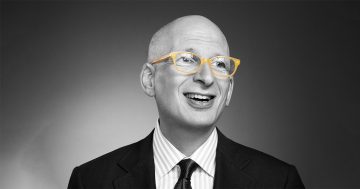Michelle Gibbings* says when changing careers, a wide selection of choices can lead to procrastination, indecision and inertia.
 For some, career decisions are simple. For others, not so much, particularly when they know they don’t enjoy their current career, but don’t know what to do next.
For some, career decisions are simple. For others, not so much, particularly when they know they don’t enjoy their current career, but don’t know what to do next.
It’s even more complicated if it feels like many options could be pursued.
Barry Schwartz explained in his TED talk, The Paradox of Choice, that having too many options to choose from doesn’t make us feel better off.
His research goes against the approach of marketers, who believe offering consumers many options is better because they will be more likely to find what they want.
Schwartz argued this isn’t always the case. Instead, he suggested we need to find the ‘sweet spot’.
That’s the point at which we benefit from variety, while not being paralysed by it.
“Choice is good, but there can be too much of a good thing,” he said.
Of course, like all research it’s never clear cut. Subsequent analysis revealed complexities with Schwartz’s findings and reminds us that generalisations are often dangerous.
Yet, choice dilemmas arise all the time. I’ve worked with many clients who have faced career choice challenges.
This arises because, with an enormous breadth of experience, they could pursue many career paths.
While that can, on the surface, appear attractive, instead it made it harder to determine what to do next.
When seeking to make a career leap, too much choice can overwhelm a person and lead to procrastination, indecision and inertia.
There’s also a fear that if they go down one path, it can, in time, lock them out from pursuing a different path.
So, when thinking about what’s next, it’s essential to source ideas and options and filter them.
However, when filtering and trying to find your sweet spot, you can kill off a good idea just because you’re worried or fearful about leaping.
Be mindful, if you hear yourself saying: ‘Yes, but…’; ‘I’ve tried this before…’; ‘I don’t have time…’ or ‘this is too hard…’
Or if others are saying to you: ‘What do you know about that?’ ‘So many people who do that fail — it’s too risky’ or ‘wow, that’s hard’.
The best way to filter is to get practical and draw boundaries around your possibilities.
This is about filtering out ideas that won’t fit with the practical realities of your life and the overall vision of the life you want to lead.
The question to ask yourself is: What are you willing to trade?
We never get everything we want in life. This doesn’t mean your life can’t be well lived and fulfilling, but sometimes life doesn’t go according to plan.
I’ll use myself as an example: I love my life, but it doesn’t mean I have everything I’ve always wanted.
I couldn’t have children. I’d love to be a few inches taller and have skinnier legs. I could go on…
It’s the same with your career. Choosing to take one direction means you are choosing not to do something else.
A career choice you make usually means there are other things you give up.
One of my clients walked away from a prominent corporate role because he wanted to work part-time.
This enabled his partner to step up to a bigger role and for him to spend more time with the children.
Another client decided to walk away from the security of a 9-to-5 job in favour of a different industry they loved.
Personally, my career motivation has always been a love of learning and being challenged.
However, in the past I have also valued financial security.
When I walked away from a corporate role, I traded the security of a defined income for something that mattered more to me at that point in my life – autonomy.
To make these trade-offs, you need to know, for example, whether the role’s location is more or less important to you than money.
You need to see if you are willing to forgo leisure time on the weekend to learn a new skill that will help you land your career leap.
You need to be clear on whether the status of the role is more important than having a flexible position.
You want to consider the level of risk you are prepared to take and how much effort you are willing to devote to the career leap.
Here are some critical factors to consider.
Give yourself time to work through the options. While it sounds formulaic, making the pro and con list can be very helpful.
Have clear decision criteria, outlining what’s most important to you, so you have an objective way of assessing and weighing up the options.
Consider alignment between your values and those of the potential organisation.
Check how the role aligns with your career aspirations. Does it fit with your career and lifestyle goals?
Remember, money is rarely the ultimate motivator; a short-term pay-rise can lead to long-term unhappiness at work.
So trust your gut instinct. Your body tells you when something doesn’t feel right.
However, don’t confuse that with the natural nervousness that can come with taking on a bigger role.
Author, Henry Miller said: “One’s destination is never a place but rather a new way of looking at things”, a comment which aptly applies to careers as well.
*Michelle Gibbings is a Melbourne-based change leadership and career expert and founder of Change Meridian. She can be contacted at [email protected].
This article first appeared at changemeridian.com.au.











